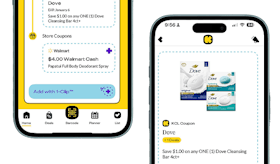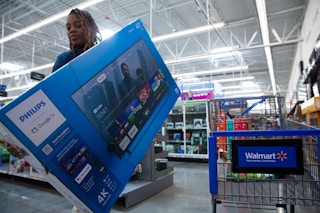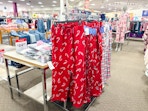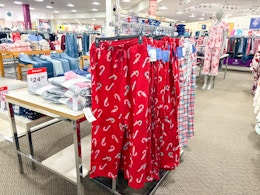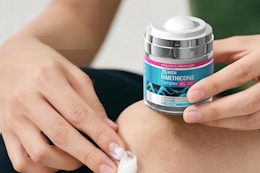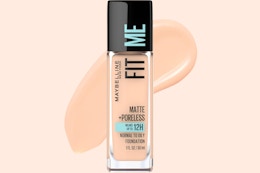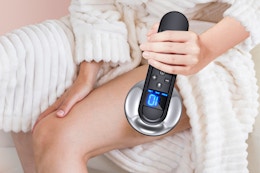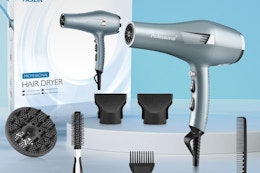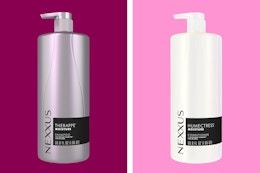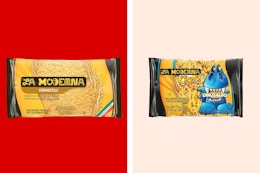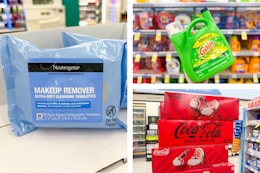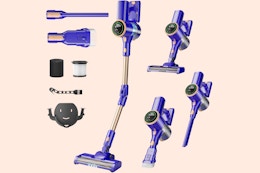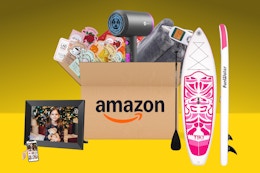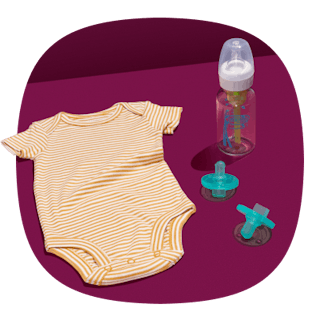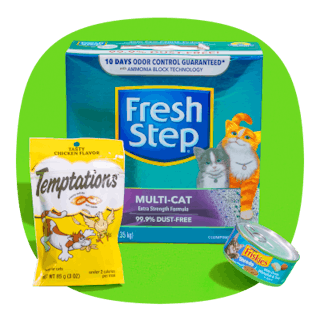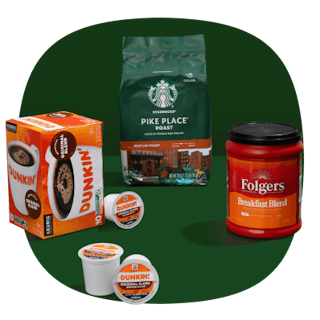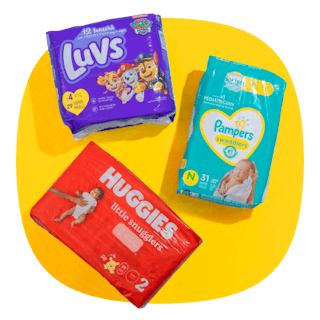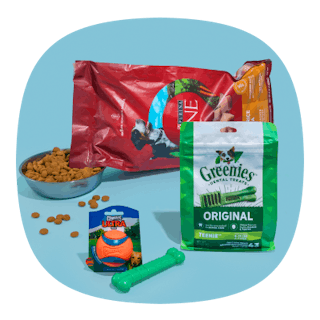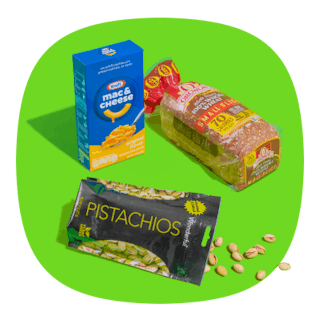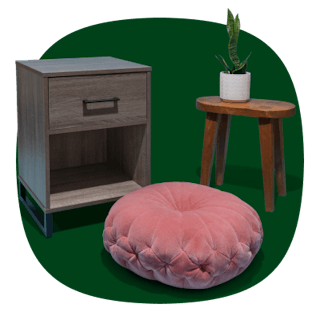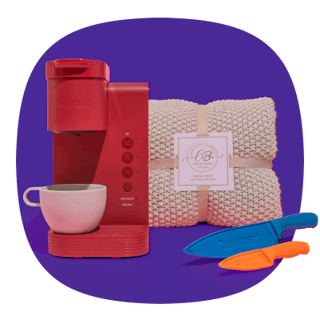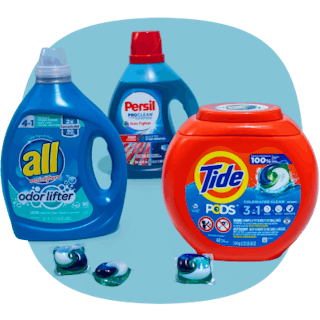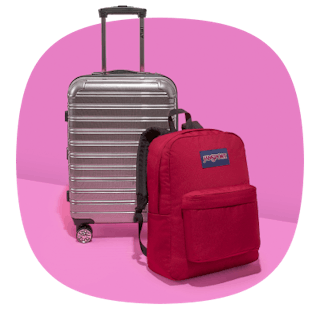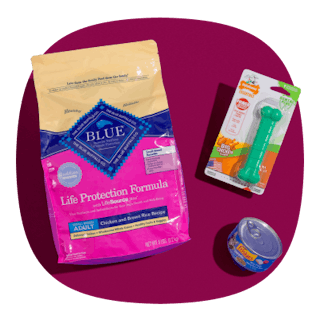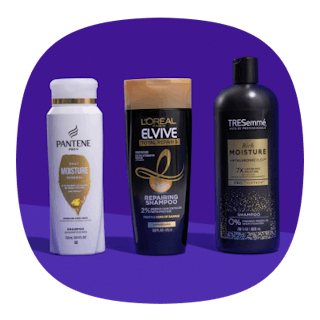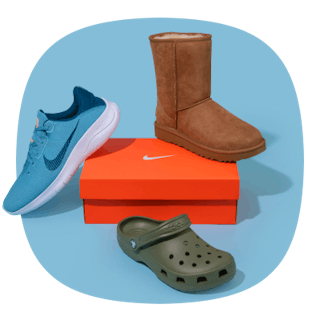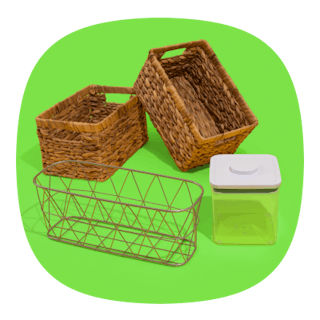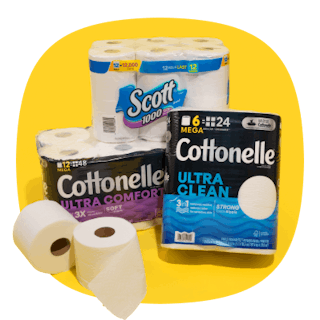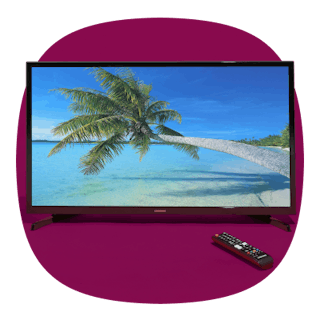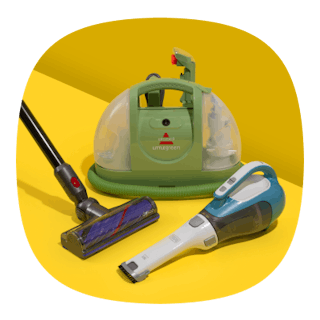Prices are going up, due in large part to an increase in tariffs on imports, Walmart’s CEO recently warned shoppers. Small appliances, electronics, and household basics, to name a few, could start getting more expensive by June. The company has been clear that it can’t absorb all the extra costs from imported goods, especially the ones coming from China.
While Walmart is likely to spread out these added costs over many shopping categories, even those not impacted by tariffs, it’s safe to assume certain products are in the bullseye. I’ll break those down and also cover what probably won’t be affected.
Download The Krazy Coupon Lady app or text HACKS to 57299 for the latest money-saving tips, deals, and coupons.
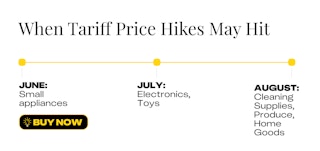
Products That Will Most Likely See Price Hikes at Walmart Soon
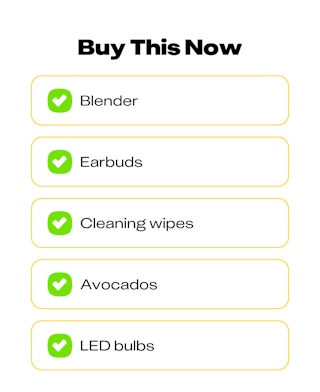
Small Appliances
Heads up if you’ve been eyeing a new toaster, blender, or air fryer. According to Vox, the vast majority of small appliances are made in China, over 90% in some categories. With tariffs hitting many of the key components, prices are already starting to creep up.
If your coffee maker or blender is on its last leg, don’t just go buy the first one you see. Start by checking the refurbished section on Walmart or Amazon. It’s often products people return without even opening, and you can save a good chunk of money and easily offset rising prices. I recently bought a refurbished Ninja air fryer on Amazon for 40% off the regular price, and it showed up looking brand new and works great.
Also, while Amazon Prime Day in mid-July should have some good deals, don’t forget about the weeklong sales in direct competition, like Target and Walmart Black Friday in July. Every year we see good deals on blenders, espresso machines, and juicers around the 40% - 50% off mark. Keep an eye out for similar deals this year.

Electronics
If you’ve noticed that laptops, TVs, or even earbuds suddenly feel a little pricier, you’re not imagining things. Many popular electronics have already crept up in price by 5% - 15% at Walmart, and that’s likely just the beginning. Since China accounts for over 75% of the electronics imported into the U.S., new tariffs targeting Chinese-made goods are expected to hit hard.
Some models from LG, TCL, and Hisense are already $20 - $50 more than they were six months ago. Also, entry-level models like the Lenovo IdeaPad or HP Stream, often used in schools, have seen price bumps between $30 and $70.
If you’re in the market, consider switching to brands less affected. For example, U.S.-assembled or Korean-made brands like Dell, Samsung, and LG may avoid the steepest price jumps compared to models assembled in China.
Another thing to consider is that Walmart has more wiggle room with their own stuff, like the Onn. brand. Tariffs are going to squeeze the big names, but Walmart will keep the prices lower longer on their in-house electronics brand to make it look like the budget hero.
Also, similar to small appliances, consider buying refurbished products from Apple, Best Buy, and Amazon Renewed which all come with solid warranties and return policies if the product doesn’t work out.
Lastly, check out Amazon's annual Prime Day event scheduled for mid-July, offering exclusive deals for Prime members across various categories, including electronics.

Toys and Games
Toys and games at Walmart are expected to increase in price due to tariffs imposed on imports from China and other countries. Walmart employees have been sharing photos of some of the price increases, with dolls and Jurassic Park toys leading the way.
The toy industry is particularly affected, as approximately 80% of toys sold in the U.S. are manufactured in China. Major toy companies, including Mattel, have indicated plans to raise prices to offset the increased costs due to tariffs.
Goodwill, Facebook Marketplace, and Once Upon a Child are obvious picks, but don't overlook local consignment sales listed on Just Between Friends. Also, church rummage sales are often packed with gently used toys for pennies on the dollar.
Be sure to also search for neighborhood garage sale weekends (often in the spring and fall) as they’re typically loaded with Lego toys, puzzles, board games, and even battery powered ride-ons for WAY less than the new tariff-driven price.
Lastly, don’t overlook a quick Google or Pinterest search for “DIY game night.” Skip the overpriced board game and turn your printer and pantry into a toy store. Printable board games, scavenger hunts, DIY playdough kits, and homemade slime labs are cheaper, customizable, and can often be made with stuff you already have.
Outdoor Decor and Tools
Thinking about sprucing up your backyard or grabbing a few new garden tools? Expect higher prices at Walmart. A lot of outdoor stuff like planters, solar lights, and basic tools are imported, and with new tariffs in play, expect prices to start climbing. They may not hit all at once, but you’ll probably feel it by mid-summer.
What to do now: Make it a habit to stroll through the clearance or as-is section, especially now as stores are trying to move spring inventory. Walmart, Lowe’s, and even Aldi often surprise me with random outdoor deals. I recently found a brand-new outdoor bench marked down by 40% at Lowe’s just because the box was torn.
It’s also smart to hit up often-forgotten discount chains like Ollie’s and Big Lots. They tend to scoop up last season’s patio and garden inventory from bigger retailers and sell it for way less.
Cleaning Supplies and Household Goods
Tariffs targeting low-cost imports from countries like China, Vietnam, and others are expected to hit everyday cleaning essentials especially hard as they have very tight profit margins.
This includes items like mops, disinfectant sprays and wipes, sponges, scrub brushes, toilet brushes, and plungers.
These are the types of items most major retailers — including Walmart, Dollar Tree, and Target — source overseas to keep prices low. With new import taxes rolling out, price hikes between 10% - 25% are very likely, especially once current warehouse stock runs out.
Stores typically hold 60 - 90 days of supply, so increases could hit shelves by mid-to-late summer.
Now’s the time to buy in bulk or get club-size packs at places like Costco or Sam’s Club. Not only will you lock in pre-tariff pricing, but larger quantities almost always give you the best price per unit.
Also consider shopping private-label brands like Great Value (Walmart) or Up & Up (Target), which are often slower to increase prices since stores can absorb costs temporarily to stay competitive.
Bananas, Avocados, and Coffee
Let’s call this one the Latin American tariff as the majority of these three items are sourced from Mexico, Columbia, Ecuador, and Costa Rica which have all been hit by 10% tariffs.
While this isn’t a big tariff, Walmart CEO Doug McMillon said the company is feeling the pressure to raise the prices on these three items, despite the easing of tariffs in recent days.
Bananas
Buy greener bananas if you can since they ripen slower, last longer, and give you more time to eat them before they go brown. Bonus points if your store discounts single or ugly bananas. Also, be sure to freeze overripe ones for smoothies or banana bread instead of tossing them.
Avocados
If perfect-looking avocados are suddenly feeling like a splurge, grab the ugly ones instead. Look for the slightly squishy and weird-shaped ones that people tend to pass up. They’re just as good and usually way cheaper.
Some stores throw them in a bin off to the side, and if you’re at a farmer’s market, don’t be shy — ask if they’ve got any extras they’ll let go for less. Most of the time they’ll hook you up with a deal, especially in the last couple of hours before they pack up.
Coffee
With tariffs hitting Colombian beans, your best bet is to look for U.S. coffee brands that get them from countries other than Colombia and then roast them here.
Roasters that get their beans this way should offer the best pricing as tariffs hit the shelves. Large coffee producers like Starbucks, Peet’s, Green Mountain, and Dunkin’ also roast their beans in the U.S., but have global coffee bean networks that let them pivot as needed to keep their prices down.
There are also lots of smaller roasters doing this already. So not only can it save you a few bucks, but it’s a solid way to support local businesses while avoiding those sneaky tariff price hikes. It’s a win-win that still gets you your caffeine fix.
Light Bulbs, Extension Cords, and Accessories
LED bulbs, surge protectors, and other electronic accessories are packed with parts that usually come from overseas. When tariffs hit those components, prices on these products at Walmart are gonna creep up — maybe not overnight, but it’s coming.
Check the clearance aisles at hardware stores, or shop stores like Ollie’s, Big Lots, or Harbor Freight. These stores often sell overstock or discontinued versions at steep discounts, and they’re less likely to pass tariff costs on quickly because they rely on opportunistic bulk buys.
Also, take a look at Costco and Sam’s Club for warehouse packs of LED bulbs as they often beat Walmart’s per-bulb price by 20% - 30%, even before tariffs hit.
KCL TIP: If you use smart bulbs, buy the base kits now as their components are the most expensive and most affected by tariffs. Bulbs that rely on Wi-Fi chips, Bluetooth, or imported sensors are likely to get pricier.
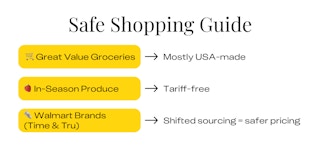
Likely Safe at Walmart: Items Unaffected or Minimally Affected by Tariffs
Private-Label Groceries (Great Value, Marketside)
Some of Walmart’s private-label products (like Great Value, Equate, and Marketside) are sourced domestically, especially for things like milk, eggs, bread, produce, and some pantry staples.
If you haven’t already, start swapping Great Value or Marketside for your go-to brands. The quality is very similar, and the savings add up fast. If you have picky kids, run your own taste test at home, and if your family can't tell the difference, start buying the cheaper stuff.
In-Season Produce
Fruits and veggies that are in season — like watermelon, corn, peaches, and strawberries — usually come from farms here in the U.S. They’re not caught up in the import and tariff situation, which means prices tend to stay lower (and the flavor is usually better too).
Similar to avocados mentioned above, save by looking for pre-bagged items, or imperfect produce if your store offers it. It might not win any beauty contests, but it tastes just as good and often costs a lot less.
Select Apparel and Footwear
Walmart’s been moving a lot of its clothing and shoe sourcing away from China and into places like India and Latin America. That’s their way of dodging some of the tariff price hikes in recent years, and it could mean better prices for shoppers who know what to look for.
Get in the habit of flipping the tag and see where it’s made. If it says India, Bangladesh, or Honduras, there’s a good chance you’re getting a better deal than something still sourced from China.
Also, keep an eye on Walmart’s private clothing brands like Time and Tru, George, and Athletic Works. These lines often update quietly with lower-cost imports from tariff-free countries, and the prices stay competitive.
Want to really stretch your dollars? Shop end-of-season racks. Summer clothes hit clearance at Walmart and other retailers just as the back-to-school stuff rolls out, so you can stock up for next year without spending a fortune.
Related Reading:
Download the KCL app to add and redeem coupons in store
